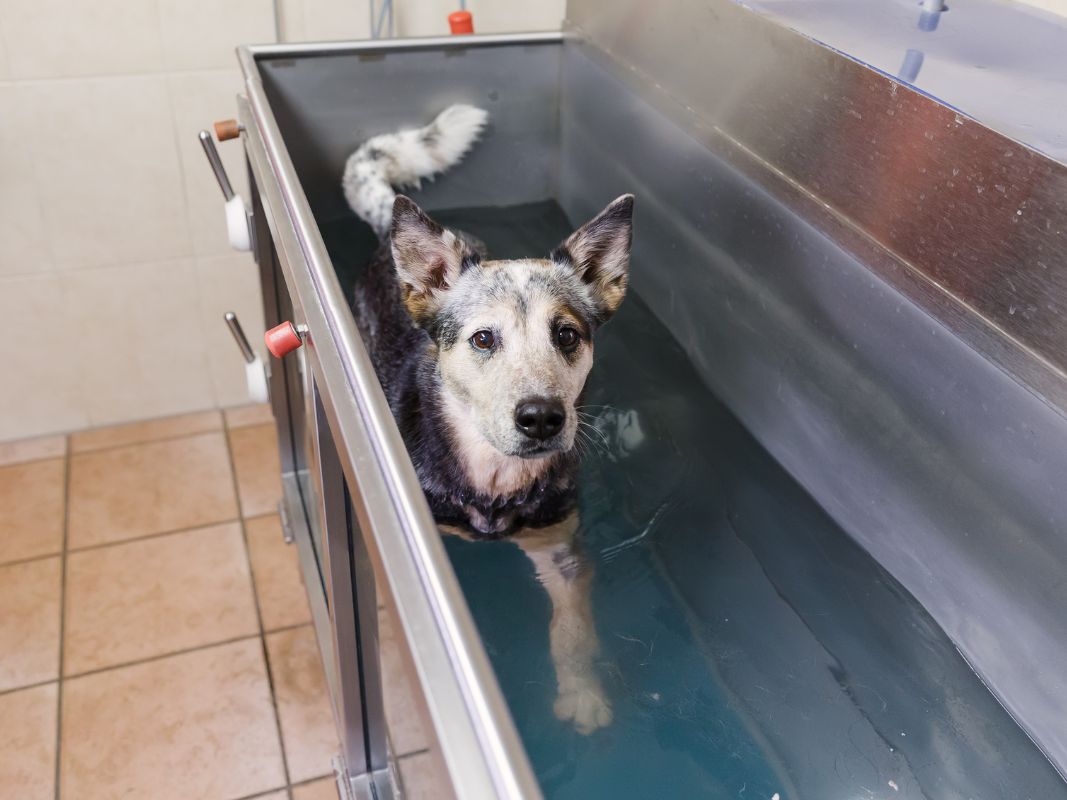|
Hip dysplasia is a common condition affecting the quality of life for many dogs, especially in larger breeds and older ages. This condition happens when the hip joint fails to develop or function properly, leading to pain associated with movement and reduced mobility.
While hip dysplasia can be a challenging diagnosis for pet owners, several exercises can alleviate the pup’s discomfort and improve their hip joint development. These helpful exercises for dogs with hip dysplasia will help them stay active and happy while managing their condition. HydrotherapyHydrotherapy, also known as water therapy, involves low-impact exercises that provide multiple benefits for dogs with hip problems. Water reduces the pressure on the joints, allowing your dog to move without experiencing the full impact of their body weight. Encourage your dog to swim gently for 10 to 15 minutes to get the most out of this type of therapy; you can use a flotation device if needed. Passive Range of Motion ExercisesThese exercises involve moving your dog’s affected limbs through their full range of motion without them applying any resistance. These exercises can help prevent joint stiffness and maintain muscle tone, relieving pain and discomfort. Gently flex and extend your dog’s hip and knee joints, holding each stretch for a few seconds. Repeat this process three to five times for each limb, gradually increasing the number of repetitions. Hill or Ramp ExercisesHill or ramp exercises are a fantastic way to gently engage your dog’s hip muscles without causing unnecessary stress on their joints. Find a gradual incline or build a ramp in your backyard to create a controlled and safe environment to strengthen the hip muscles. Orthopedic veterinary surgery might be the next solution to restore your dog’s quality of life if they have too many complications with this exercise. Leash-Assisted WalkingLow-impact exercises for dogs with hip dysplasia are essential, and leash-assisted walking is one of the safest options. This exercise lets you control the pace and distance, preventing your dog from overdoing it. Take your dog for short, regular walks on soft and even surfaces to minimize the impact on their joints. Avoid rough terrains or uneven surfaces because these might intensify hip discomfort. Sit-to-Stand ExercisesSit-to-stand exercises are excellent for enhancing your dog’s hip and thigh muscles while improving their overall stability and balance. This exercise involves having your dog transition from a sitting to a standing position repeatedly. Gently guide your dog into a sitting position and encourage them to stand up using a treat or a favorite toy. Repeat this motion five to ten times, allowing your dog to rest in between each movement. Hip dysplasia can be a challenging condition for dogs, but with the right exercises, you can help improve their mobility and overall well-being. Always consult your veterinarian before starting any exercise regimen because they can provide valuable guidance tailored to your dog’s needs.
0 Comments
Leave a Reply. |
AuthorAntelope Valley Medical Center Team archives
June 2024
Categories |


 RSS Feed
RSS Feed
